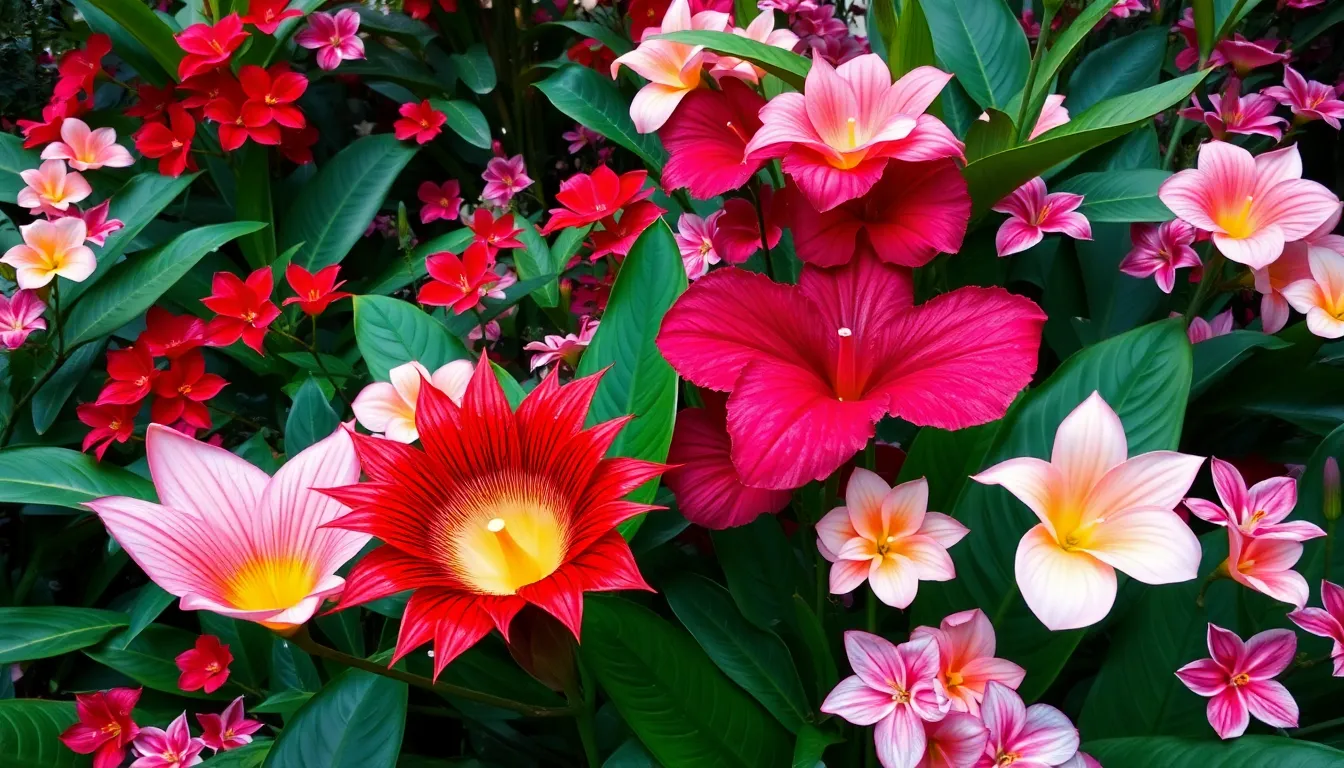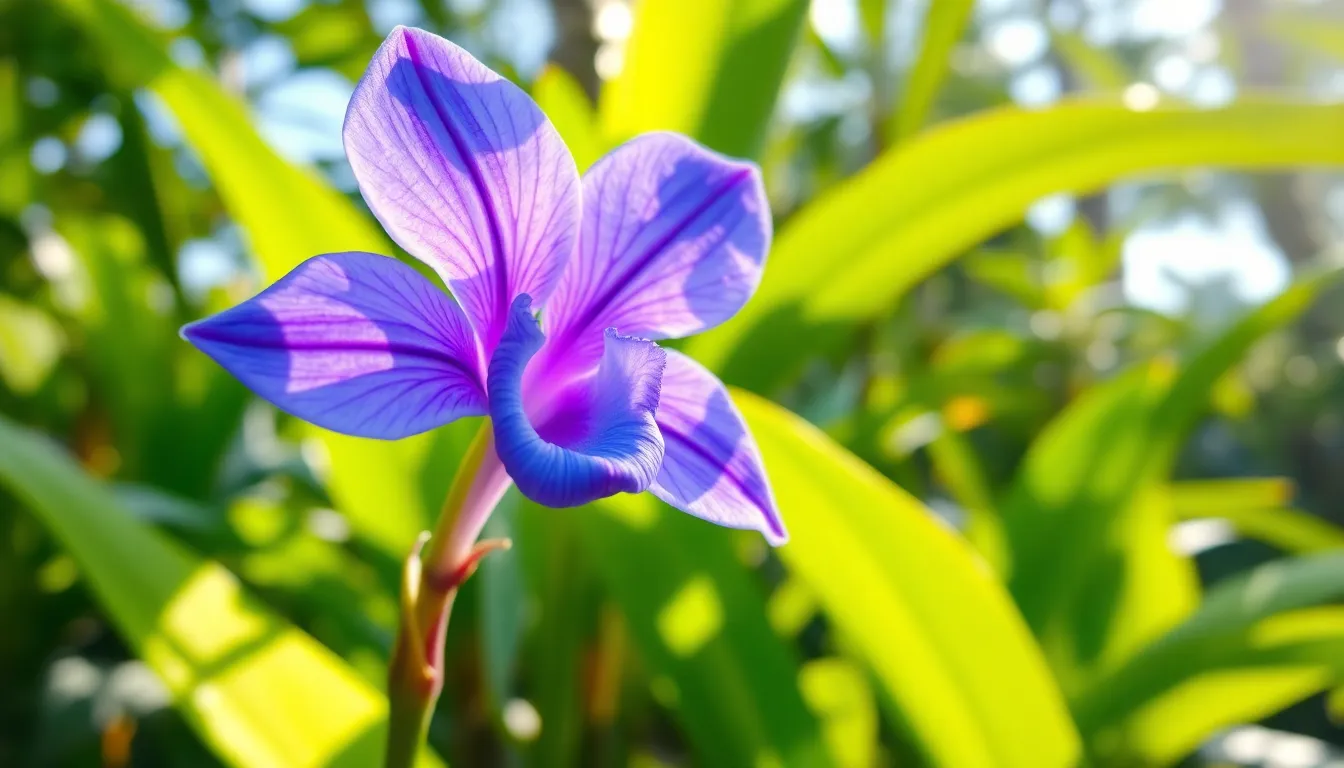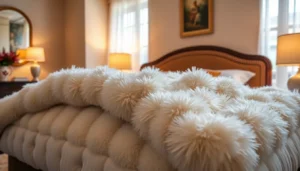In the enchanting world of flora, some flowers stand out not just for their beauty but also for their rarity. These exquisite blooms captivate hearts and minds, drawing admiration from botanists and nature lovers alike. From vibrant colors to unique shapes, each rare flower tells a story of its own, thriving in specific environments and often found in limited locations.
Exploring these stunning specimens reveals a deeper appreciation for nature’s artistry. As the demand for exotic plants grows, understanding their significance becomes crucial. Discovering the rarest and most beautiful flowers not only enhances one’s garden but also fosters a connection to the delicate ecosystems they inhabit. Join in the journey to uncover these floral treasures that grace our planet with their breathtaking presence.
Table of Contents
ToggleOverview of Rare Flowers
Rare flowers captivate with their unique aesthetics and limited distributions. Environmental factors, such as soil type, climate, and geographical location, heavily influence their existence. Many rare flowers thrive in specific ecosystems, making their habitats crucial for survival.
The following is a list of notable rare flowers:
- Middlemist Red: This flower ranks among the rarest, found only in New Zealand and the UK. Its striking pink-red petals attract horticulturists and collectors.
- Corpse Flower: Known for its large size and foul odor, the corpse flower blooms infrequently, releasing its scent to attract pollinators such as carrion flies.
- Ghost Orchid: This elusive flower, native to Florida and Cuba, thrives in swamps and is known for its unique appearance, which resembles a phantom.
- Blue Vanda: Unique for its vibrant blue color, this orchid is mainly found in Southeast Asia and is highly regarded for its beauty and rarity.
- Kadupul Flower: Native to Sri Lanka, this flower blooms at night and wilts before dawn, making it one of the most ephemeral blooms in the world.
Understanding rare flowers highlights the importance of conservation efforts. Protection of their natural habitats directly contributes to their survival and preservation for future generations. These unique blooms not only fascinate but also demonstrate the diversity of the plant kingdom.
Characteristics of the Most Beautiful Flowers

Beautiful flowers display distinctive characteristics that captivate observers. These features encompass color variation, fragrance, and unique petal structures, all contributing to their allure.
Color and Fragrance
Rich colors define the visual appeal of beautiful flowers. They range from vibrant reds, deep purples, and soft pastels to strikingly bright hues. Colors often serve a functional purpose, attracting pollinators such as bees, butterflies, and hummingbirds. Fragrance also plays a crucial role in their charm, with scents varying from sweet and fruity to spicy and musky. Flowers like the Orchid and Rose are well-known for their enchanting aromas, enhancing their desirability in gardens and floral arrangements.
Unique Petal Structures
Unique petal structures contribute significantly to a flower’s beauty and functionality. Petals can exhibit complex shapes, varying sizes, and intricate patterns, designed to attract specific pollinators. The Rafflesia, for instance, showcases large, leathery petals that can reach up to 3 feet in diameter. In contrast, the Blue Vanda exhibits delicate, thin petals that create a stunning visual effect. These variations not only enhance their aesthetic value but also improve pollination success and survival in specific habitats.
Examples of Rare Most Beautiful Flowers
Rare flowers captivate with their unique beauty and distinct characteristics. Below are notable examples that exemplify this rarity and allure.
The Corpse Flower
The Corpse Flower, scientifically known as Amorphophallus titanum, is renowned for its enormous size and foul odor, reminiscent of rotting flesh. This flower can reach heights of up to 10 feet and can take several years to bloom. Found primarily in the rainforests of Sumatra, its bloom attracts specific pollinators, such as carrion beetles and flies. The flower opens for just 24 to 48 hours, making the witnessing of its bloom a rare and sought-after event.
The Blue Vanda Orchid
The Blue Vanda Orchid, part of the Vanda genus, showcases stunning blue to violet flowers. This hybrid orchid thrives in tropical climates and can be found in Southeast Asia. The flowers present a unique star-like appearance, with a fragrance that entices various pollinators. Grown mainly in hanging baskets, the Blue Vanda can flourish in bright, indirect sunlight, requiring specific humidity levels for optimal growth.
The Middlemist Red
The Middlemist Red (Middlemist camellia), originating from China, is one of the rarest flowers on the planet, with only two known specimens existing today. This exquisite flower features delicate, vibrant red petals and has a rich, floral fragrance. Historically cultivated in Europe, its rarity stems from habitat loss and limited propagation. The Middlemist Red thrives in mild climates, requiring protection from extreme temperatures.
Importance of Conservation
Conservation plays a crucial role in ensuring the survival of rare flower species. Protecting these extraordinary blooms safeguards biodiversity, supports ecosystems, and preserves natural beauty for future generations.
Threats to Rare Flower Species
Environmental changes pose significant threats to rare flower species.
- Habitat Loss: Urbanization and agriculture lead to habitat destruction, reducing the areas where rare flowers can thrive.
- Invasive Species: Non-native plants and animals compete with native flora, disrupting ecosystems and diminishing rare flower populations.
- Climate Change: Altered weather patterns can affect flowering cycles, pollinator availability, and overall plant health.
- Over-Collection: Unsustainable harvesting practices diminish populations of rare flowers, pushing them closer to extinction.
Conservation Efforts and Initiatives
Efforts to conserve rare flowers include multiple strategies.
- Protected Areas: Establishing national parks and nature reserves creates safe habitats for rare species.
- Restoration Projects: Rehabilitating degraded habitats helps restore conditions necessary for rare flowers to thrive.
- Public Awareness Campaigns: Educating communities about the importance of rare flowers encourages conservation efforts and responsible practices.
- Research Programs: Scientific studies on the ecological needs of rare flowers inform effective conservation strategies.
Innovative conservation initiatives, such as seed banking and ex-situ conservation, enhance efforts to protect these unique species and ensure their survival.
The rarest and most beautiful flowers in the world serve as a testament to nature’s incredible artistry. Their unique characteristics and captivating beauty not only inspire awe but also remind us of the delicate balance within ecosystems. Protecting these floral wonders is crucial for maintaining biodiversity and ensuring that future generations can appreciate their splendor.
By understanding the environmental needs and threats these flowers face, individuals can contribute to conservation efforts. Every small action counts in preserving these extraordinary plants for the enjoyment of all. Embracing the beauty of rare flowers fosters a deeper connection to nature and highlights the importance of safeguarding our planet’s rich botanical heritage.



